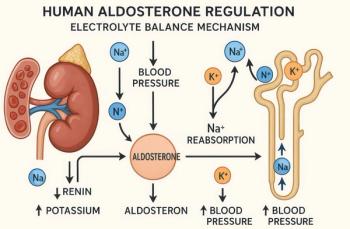
Subclinical Atrial Fibrillation in Type 2 Diabetes: Silent Menace
Persons with type 2 diabetes are at risk for asymptomatic atrial fibrillation and subsequent cerebrovascular events.
In the beginning it was straightforward: atrial fibrillation (AF) could be a rhythm or rate problem that caused a decline in cardiac output and/or heart failure. Sometimes, it led to the diagnosis of hyperthyroidism. Then, AF was implicated in emboli of the CNS as well as other vascular territories, and the era of anticoagulation began.
Today, things are not so simple. We now recognize a Pandora’s Box of complications consequent to AF. The presence of AF can decrease cognitive function even in the absence of a stroke; the arrhythmia can be associated with hippocampal atrophy, impaired memory, and a greater decline in intellectual function in individuals with Alzheimer disease.1-3 Unfortunately, this is not a comprehensive list of pathologies associated with AF. Recently, even the subclinical variety of AF has been identified as a risk factor for serious cerebrovascular complications.2
In a study recently published in the Journal of the American College of Cardiology, persons with type 2 diabetes mellitus (T2DM) were found to have a higher incidence of subclinical AF when compared with those without diabetes (11% vs 1.6%).2 “Subclinical” in this context was defined as non-sustained, asymptomatic, paroxysmal AF diagnosed by Holter monitoring, not by a medical visit precipitated by symptoms. As highlighted by this longitudinal, observational study, what the patient does not know or cannot feel can be a big problem. The target cohort comprised persons with T2DM younger than 60 years and without a clinical diagnosis of AF. They were compared with age-matched controls without diabetes. Even without bona fide, symptomatic AF, the T2DM cohort was at a 4.4 times greater risk for silent cerebral lacunar infarction (as confirmed on MRI) and a 4.6 times greater risk for stroke than the control group. Within the T2DM cohort, individuals with subclinical AF also had larger left atria, higher systolic blood pressures, and longer durations of diabetes.
In contemporary practice, stroke risk for patients with AF is estimated using scores derived from clinical risk calculators, such as the
The present paper demonstrates, however, that scoring stroke risk in clinically evident AF is merely the tip of a dangerous vascular iceberg. Asymptomatic, or silent, AF goes undetected by patients and physicians alike and can only be identified by Holter monitoring study. These folks, too, are at significant risk for stroke and, as the results of this study show, are even more vulnerable to AF and asymptomatic AF if they have comorbid disease.
The future treatment of AF requires answers to some troubling questions and more and/or more sensitive tools to diagnose the disorder as well as closer scrutiny of the full range of consequences.
References:
1. Kaiser C. Asymptomatic atrial fibrillation deadly in diabetics.
2. Marfella R, Sasso FC, Siniscalchi M, et al. Brief episodes of silent atrial fibrillation predict clinical vascular brain disease in type 2 diabetic patients. J Am Coll Cardiol. 2013;62:525-530. (
3. Prystowsky EN, Padanilam BJ. Preserve the brain: primary goal in the therapy of atrial fibrillation. J Am Coll Cardiol. 2013;62:540-542. (
Additional resource
Stroke Prevention in Atrial Fibrillation (SPAF) Manger.
Newsletter
Enhance your clinical practice with the Patient Care newsletter, offering the latest evidence-based guidelines, diagnostic insights, and treatment strategies for primary care physicians.






















































































































































































































































































